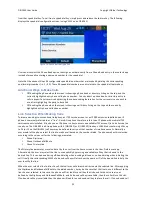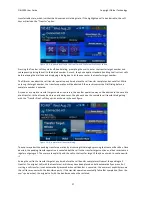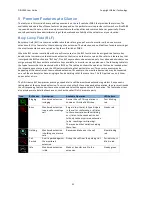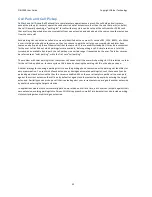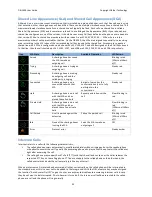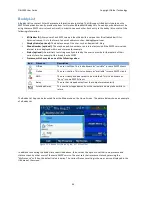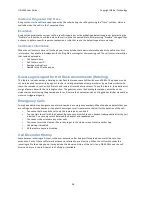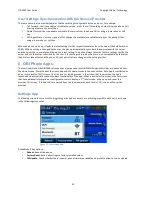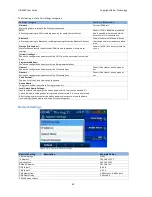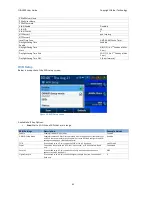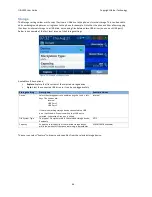
OBi1000 User Guide
Copyright Obihai Technology
32
Call Park and Call Pickup
Call Park and Call Pickup (Call Retrieval) are complimentary operations very much like call hold and call resume,
except the pickup (vs. resume) operation can be carried out at extensions other than the one that parks (vs. holds)
the call. Generally speaking, a “parking lot” for calls with many slots can be setup at the soft switch or PABX such
that a call may be parked at an unoccupied slot from one extension and picked up by the same or another extension
from the same slot.
Each parking slot can hold one call and is uniquely identified with a numeric ID, such as 001, 1234, 88912, etc. While
a user is talking on the phone to someone, they can choose to park the call at an unoccupied slot and later have
someone else or pick up the call themselves from the same slot. From a usability standpoint, it may be inconvenient
for the user to first find out which parking slots are available, before parking a call. A simple solution is to let the
system pick an available slot to park the call, perhaps in a certain range if requested by the user. The latter case can
be referred to as “valet parking”, while the first case “self parking”.
The problem with valet parking is that the system still needs to tell the user which parking slot ID is selected in order
for the call to be picked up. In some systems this is done by showing the parking slot ID on the phone screen.
Another strategy for choosing a parking slot is to use the parking phone's extension as the parking slot identifier, for
easy memorization. You can think of each extension as having an associated parking slot, such that one call can be
parked against each extension
that has this resource enabled. When the user attempts to park a call, you can park
against the current extension the call is on by default or against another extension by explicitly entering the target
extension. Similarly you can pick up a call that is parked against your current extension or against another extension
by explicitly entering the target extension.
In applications where most users normally park no more than one call at a time, each user can just park against their
own extension, avoiding parking slot collisions. With this approach, some BLF implementations also include parking
slot monitoring when monitoring an extension.






